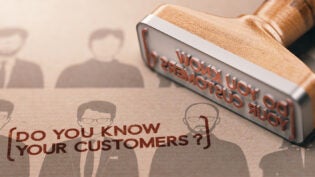
The November 24, 2013 issue of the Denver Post ran an interesting story on the front page of the Business section.
“Price checks ruffle retail” says the headline. “Cellphone-using shoppers force stores to rethink policies.” Hmmm… a big problem faced by brick-and-mortar retailers that will probably become as big as it’s ever been this holiday season.
The article continues:
Retailers are learning to respect—not fear—their customers who whip out a smartphone to check competitors’ prices.
The practice is known as showrooming. Shoppers visit a brick-and-mortar store, examine a product, then use a mobile device to see if a better price is offered at other stores or e-commerce sites.
Analysts estimate that retailers lose as much as $217 billion a year in missed sales from showrooming customers. The fallout is bad enough that some stores were disabling wireless Internet connectivity to keep shoppers from browsing—an approach now largely discontinued.
In this day and age, turning off wireless connectivity will not stop consumers from running price checks. Just about everybody has a data plan through their cell carrier that allows them to surf the web without an Internet connection.
So if retailers can’t stop showrooming, what are they doing about it? And what suggestions did readers of my blog have for turning showrooming into an advantage?
How Big Box Retailers Are Dealing with Showrooming
The most obvious way to deal with showrooming is to offer to match competitors’ prices. And, not surprisingly, this is the primary tactic being employed by big box retailers. The Denver Post reports:
Staffers in Target’s electronics departments and service desks are equipped with iPads to look up product information and to confirm a customer’s claim that an item is priced lower at a competing online retailer.
Target stores will match prices for identical products listed on Amazon.com, Wal-mart.com, BestBuy.com, Toysrus.com and even its own website, Target.com, as well as local brick-and-mortar stores.
Best Buy takes the concept a step further by matching with a greater selection of online competitors, plus physical stores within a 25-mile radius.
The article claims these price-matching policies have worked “to their advantage”—that is, to the advantage of Target, Best Buy, and similar big box stores. But they fail to provide any proof of this claim.
I personally can’t see how it’s an advantage to sell at a lower price while still maintaining the higher overhead costs of a physical retail store.
Maybe the thinking behind price-matching is similar to that of “loss leader” pricing. A loss leader is a product (like bananas) that are sold at a loss simply to attract more customers. By price-matching a single product, perhaps the retailer hopes the customer will purchase a few other high-margin products at the same time.
No matter what the thinking is, competing on price is a losing game. If the only products a store sells are those that are price matched, it becomes a race to the bottom. As reader Ray McArthur pointed out, “Becoming unique by lowering your price is the worst thing you can do. What’s next… take all you can for free just for visiting?”
Some Ideas that Could Actually Work Long-Term…
In the original version of this article, I asked my readers to answer the following question:
If you had a brick-and-mortar store, how would you turn showrooming to your advantage?
Here are some of the ideas I received.
Mike Lyons: “Trader Joe’s has already solved this problem. You carry primarily unique items that can’t be found anywhere else. And sell things with higher margins so you can afford to spend more on marketing.”
Matt Fox: “Target has requested some of their suppliers to deliver their products in sizes different than other stores. So if you normally buy a 21 oz cleaner from every other store, Target gets an 18 or 24 oz bottle that is only offered through Target. This keeps people from being able to effectively compare prices.”
John Thomas: “I agree with what others have said in that you have to differentiate yourself in the customer’s mind by service orientation or unique product line or customer experience. Your marketing and customer interaction have to be better than your competition. If you live by price, you’ll die by price.”
Martin Stellar: “I really like G.M.s approach: match price and get the profit out of upsells or warranties. That way you could actually turn showrooming to your advantage, brandishing a price match guarantee.”
(For more ideas, you can read the following comments.)
Customers Can’t Showroom When You Offer Unique Products
I agree with my readers’ observations and suggestions. Differentiation is the only profitable way to combat showrooming. And of all the ways a retail store can differentiate itself, offering unique products that can’t be found elsewhere seems to be the most effective.
As Matt pointed out, Target works with manufacturers to develop Target-only products. I noticed this on a recent outing to look at the new Skylanders Swap Force characters with my kids. Apparently, Target partnered with ActiVision to create a few Skylanders Swap Force characters that are not available anywhere else. If your children happen to want one of the Target-exclusive characters, you must buy it at Target.
Now pay attention…
Most people (including me) will not know whether or not a product is exclusive. So Target handles this by placing “Target Exclusive” signs next to exclusive products, which is very smart. If you carry an exclusive product, you need to advertise this fact inside your store so customers know about it.
In other words, it’s not enough to offer exclusive products, you must also inform your customers so they know the products you sell are indeed exclusive.
“People Just Want to Know They Got a Good Deal”
In the end, consumers just want to feel good about their purchases. Kyle Tully, also known as “The Consulting Tycoon,” left one of the more insightful comments, which I’ve reprinted here in full.
Trying to price match an online store who doesn’t have your overheads is kinda like jumping in the grave and waiting for someone to fill it.
If you don’t/can’t offer unique products then you offer something else unique… sales, service, story, experience, convenience, bundles, bonuses, guarantee, etc.
The majority of people are motivated by price only when not given other criteria to judge value.
I have “showroomed” a store before and the sales guy handled it great, something along the lines of “well I can’t match that price but here’s what I can do…” and he threw in some intangibles with a higher perceived value to me and low fulfillment cost to them.
Price itself is rarely the bottom line make or break, people just want to know they got a good deal.
Showrooming isn’t going away. In fact, it will become easier and grow in popularity over time. Ultimately, the retailers that survive will be the ones that adopt and implement the ideas shared in this article.
This article was originally published by Ryan Healy
Published: December 5, 2013
3496 Views
3496 Views












